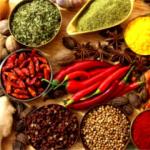Which foods are called acidic and which are alkaline, what is the difference between them, and how do they affect human health?
Human blood is alkaline. To maintain blood alkalinity, we need 80% alkaline foods and 20% acidic foods. After going through the full cycle of digestion and metabolic processes in the body, some foods leave behind alkaline waste, while others leave behind acidic waste. We can call such products alkaline-genic and acid-genic, respectively.
Typically, acids synthesized during the metabolism of products (for example, uric acid, lactic acid, etc.) enter into a chemical reaction with alkalis in the blood, lymph, bile, etc., and are ultimately neutralized. But if acid-genic foods predominate in the diet, the body cannot cope with all the incoming acids, and then symptoms begin to appear: fatigue, headache, loss of appetite (anorexia), insomnia, nervous tension, hyperacidity, runny nose, etc.
There are other important side effects that occur due to increased blood acidity. The body uses sodium as a buffer to maintain homeostasis and return the acidic pH to normal levels, causing sodium stores to become depleted. When sodium can no longer buffer the accumulated acid, the body begins to use calcium as a second buffer. Calcium is leached from bones and teeth if there is not enough of it in the diet. This leads to weakened bones, which become porous and brittle. This condition is called osteoporosis in medical parlance.
Chronic hyperacidity is an abnormal condition in which the processes of degeneration and aging of the body are accelerated. All toxic substances in the body are in the form of acids and to prevent or counteract the accumulation of acids in the body, we must consume foods that are primarily alkaline in nature.
Therefore, it is important to know which foods are acidic and which are alkaline. Depending on the effect of food on urine, they are divided into acid- or alkaline-gene. Calcium, magnesium, sodium, iron, copper, manganese and potassium in food create alkaline effects. Sulfur, phosphorus, chlorine, iodine, carbon dioxide and carbonic, lactic and uric acids in products create an acidic effect.
List of sour foods
1. All food products of animal origin: meat, eggs, fish, poultry, etc.
2. Dairy products: sterilized and pasteurized milk, cheese, cottage cheese and butter.
3. Dried peas and beans.
4. All grains and legumes: wheat, corn, rice and beans.
5. All nuts and seeds (dried): peanuts, walnuts, cashews, sesame, sunflower, melon seeds.
6. All prepared and semi-finished products: white bread, buns, baked goods, white flour, polished rice, white sugar.
7. Toxic products: tea, coffee, alcohol, tobacco, soft drinks.
8. All fats and oils.
9. All fried and spicy foods.
10. All sweet foods and candies (containing white sugar).
List of alkaline foods.
1. All fruits (fresh or dried), including citrus fruits.
2. All fresh vegetables and green root vegetables (except peas and beans).
3. Sprouts of beans, peas, cereal grains and seeds.
4. Sprouted grains and legumes??
Partially alkaline foods
1. Fresh raw milk and cottage cheese.
2. Soaked nuts and seeds.
3. Fresh nuts: almonds, coconut, Brazil nuts.
4. Fresh green beans, peas, grains and millet.
Some useful notes
1. As can be seen in the table, whole wheat flour, brown rice and other grains are mildly acidic in their natural state, but become more acidic when processed or refined.
2. Almost all grains, beans, all types of meat, eggs, fish are acidic in nature, while almost all fruits and vegetables are alkaline.
3. All citrus fruits (lemon, orange) initially seem sour, but their final effect in the body is alkaline. This is why they are classified as alkaline foods.
4. Hard-to-digest legumes belong to the category of acidic foods, but when sprouted they become more alkaline and less acidic.
5. There is virtually no doubt about the acidic or alkaline nature of milk. In this regard, it must be noted that fresh raw milk is alkaline, while heated or boiled milk is sour. Various products derived from milk such as cheese, butter, etc. are also sour in nature.
6. Among nuts, peanuts are the most acidic, while almonds are the least acidic. Coconut, on the other hand, is alkaline in nature.
The division of food into acidic and alkaline was made by yogis a very long time ago. Sour foods include all animal products, many cereals, especially peeled, dried legumes, cottage cheese, and cheese. Alkaline foods - vegetables, fruits, nuts (except peanuts), herbs, milk, curdled milk, yogurt.
In Europe, this was first noticed more than 100 years ago by the German scientist R. Berg. He proved that maintaining an alkaline internal environment is optimal for the body, which is largely achieved by selecting appropriate products.
According to the recommendations of yogis, it is necessary that during the day one part of acidic food should be at least two parts of alkaline food. An alkaline internal environment is characteristic of healthy people and ensures effective life activity, reduces the need for proteins, gives strength and longevity. Long-term acidification brings disease and premature senility.
Scientists N. Walker and R. Pope evaluated a number of foods in connection with their ability to oxidize or alkalize the body.
“+” - weak alkalization; “-” - weak oxidation;
“++” - average alkalization; “- -” - average oxidation;
“+++” - strong alkalization; “- - -” - strong oxidation;
“++++” - very strong alkalization, etc.
Alkalinization of the internal environment is facilitated by acid cations - calcium, magnesium, potassium, sodium. Acidification is caused by anions containing phosphorus, sulfur, and chlorine. An alkaline environment in the body promotes health, but this does not mean that you need to switch to eating only alkaline foods. Harmony is important everywhere, so it is best to stick to the ratio of “one part acidic food - two parts alkaline”!
Fruits
Fresh apricots +++
Peaches +++
Dried apricots ++++
Dried plums -
Watermelons +++
Pickled plums -
Ripe bananas ++
Currant +++
Green bananas -
Fresh lemon juice +++
Grapes++
Lemon juice with sugar -
Grape juice++
Fresh orange juice +++
Grape nectar -
Dates++
Cherries++
Almost all fruits +++
Melons +++
Fruits boiled with sugar from - to -
Raisin++
Prunes ++
Dried figs ++++
Fresh apples ++
Cranberry +
Dried apples ++
Vegetables and cereals
Potatoes with skin +++
Peanut -
Carrot ++++
Almond++
Pepper +++
Starch -
Fresh tomatoes ++++
Mamalyga and corn flakes -
Radish +++
Oatmeal +++
Fresh beets ++++
Barley grits -
Fresh beans +++
White flour -
Dried beans -
Black bread -
Baked beans -
White bread -
Green peas++
Dry peas -
Animal products
Whole milk +++
Boiled lamb -
Whey +++
Lamb stew -
Cream -
Fresh lean ham -
Hard cheese -
Fatty bacon -
Soft cheese - Skinny bacon -
Eggs --
Lean pork -
Beef -
Pork lard +
Veal -
Fish from - to -
Beef liver -
Halibut -
Game --
Cancers --
Chickens -
Oysters --
Mussels -
P.S. And remember, just by changing your consumption, we are changing the world together! © econet
There are food products that, when broken down in the body, give an alkaline reaction, and there are those that give an acidic reaction and thereby disrupt the acid-base balance.
We know that all 7 billion people on planet Earth have alkaline organs and we know that we need to maintain a balance of acids and alkalis in the body. If we want to be healthy and live without getting sick.
So, there are acidic and alkaline foods.
As for acidic or oxidizing foods, you can eat them provided that alkaline foods are also present in your diet. If your body is highly acidified, then there should be only 20% acidic foods and 80% alkaline foods, and not vice versa, and it would be ideal If only 20% were food and 80% water.
But now it’s the other way around.
Conclusion: why do we get sick? So what should I do?
As you can see, everything is simple. The main thing is to understand the essence.
Let's list the foods and drinks so that you can refer to this list if necessary.
Sour foods
Meat
fish
eggs
oil
bread, especially yeast and white bread
soup
buns
pies
refined deodorized vegetable oil
nuts other than almonds
all sour vegetables (eggplant, tomatoes)
lactic acid products (fermented baked milk, yoghurt, kefir, sour cream)
sour berries (gooseberries, cranberries, lingonberries, currants, strawberries, blueberries, rowan)
acidic types of chlorophyll (sorrel, rhubarb, onion, garlic)
all sour fresh juices (cranberry, lingonberry, blueberry, apricot)
sugar (any product to which sugar is added becomes sour, for example lemon is an alkaline product, and adding sugar becomes sour)
Beans, peas, lentils
chocolate
cakes
creams
cheese
crabs, shrimp
figs
Sour drinks
cocoa
coffee
juices
Black tea
apricots
figs
lemon (only with sugar - sour)
honey
Alkaline products
Cottage cheese (fresh)
celery
corn
banana
all greens: e.g. spinach, parsley, lettuce, dill, cilantro (except sorrel)
avocado
salad
almond
cabbage (broccoli, collards, cabbage)
potatoes (contains potassium under the skin)
carrot
black grain bread
biscuits, bread
Zucchini
pumpkin
cucumbers
beet
turnip
Jerusalem artichoke
mango
raspberries
watermelon
pears
pepper
dates
cilantro
zucchini
cereals: rice, buckwheat.
all oils are cold pressed. Extra virgin (soybean, olive, linseed, mustard, nut)
lemon (no sugar)
Among drinks, only water and milk are considered alkaline.
From herbal decoctions:
Chamomile
Linden
rose hip
mint
Melissa
green tea
For those who cannot tolerate milk, the ideal diet option is fresh whey from cottage cheese.
Now let's look at
environmentally harmful food.
Buy something that goes bad!
Products. that do not spoil are not natural, they are not digested and are not excreted naturally. Those that have a long shelf life are stored IN US.
smoked sausage
boiled sausage (there is practically no meat in it, with the exception of premium sausages)
Standard recipe for sausages and sausages, etc. according to TU:
textured soy protein Profam 974, Arcon F.ST or TVP 165-1.14; E-621 additional enhancer of “meat” taste - monosodium glutamate - to create a visual illusion of meat;
tri-substituted sodium diphosphate abastol-772 - for a richer meaty shade.
Mayonnaise in plastic jars
(in plastic packaging, mayonnaise becomes toxic due to the acids of vinegar. It should be in glass jars.)
The same applies to mineral water.
margarine (contains trans fats)
Any butter up to 82% can be consumed, but not a lot. If there is E-160a (dangerous), E-330 (carcinogen) on the oil box, beware!
dry broth
It contains the flavoring additive E-621. One of the most dangerous food additives, it is designed to enhance the sense of taste by irritating the receptors of the tongue. It is this that makes us enjoy the taste of the broth. E 621 causes cataracts, bronchial asthma, blindness, deafness, and dementia.
genetic engineering products, modified products
pickled products (contains a lot of vinegar: highly acidifying, terrible poison, long-lasting)
Yogurts stored for more than 10 days (otherwise bacteria will multiply in the yogurt, the yogurt will fly into the air (stored with antifoaming agents and radioactive for more than 10 days)
sour cream that does not spoil
milk in aseptic packaging
jams
lightly salted fish is stored for 3 days (if more, it contains methenamine -E 326. If you add pickled cucumbers, the vinegar will react with methenamine, producing formaldehyde, which, in fact, can contribute to the appearance of tumors, destruction of the pancreas and gastrointestinal enzymes, intestinal dysbiosis)
mushrooms (mushrooms are not plants, but animals, and are not digestible, because humans do not have an enzyme to digest mushrooms. Forest animals have it - squirrels, elk, pigs.
Vietnamese dried bananas
caviar (as well as lightly salted fish)
You should be wary of all environmentally hazardous food, i.e. long-storable. These are highly concentrated, pickled, smoked products that practically do not spoil. If you have doubts about this or that product, then you should not buy it.
Environmentally harmful drinks
instant coffee
Industrially produced juices, except carrot and pumpkin, 90% contain antioxidants, acids and flavor enhancers.
tea (any tea except loose leaf tea) contains dyes, and dyes acidify the body
mineral sparkling water (most often artificially created)
kvass (contains dyes)
All carbonated lemonades and drinks contain carbon dioxide, among other things.
According to scientists' research,
the best anti-aging products for women.
Spirulina
avocado
Broccoli (contains an anti-cancer antioxidant for breast health)
cabbage
spinach
carrot
apricots
celery
citrus
berries: blueberries, strawberries, wild strawberries, cranberries, red grapes
The basis of life is acid-base balance.
Based on materials from a lecture by Olga Butakova.

Almost every modern person faces problems such as skin irritation, inflammation, sensitivity, tightness, itching. All these problems can manifest themselves both on the face and on other parts of the body. It turns out that the vitality and impeccable freshness of the skin depends on the quality of human nutrition. We are not talking about cheap or expensive products or food brands. This refers to the balance of acidic and alkaline foods in the diet of a person leading a healthy lifestyle.
Few people are interested in what the term pH means. Very often this indicator is indicated on hygiene products for body care, hair and skin care, nails, and cosmetic products. For many, pH is not the main criterion for choosing personal care products, which is why skin problems are an all too common problem.
pH value
The basics of chemistry say that pH is an indicator of the ratio of acid and alkali in the body.
In practice, you can determine their balance:
- for the whole organism;
- either for the skin;
- either for hair;
- or for blood.
Each specific pH indicator is an indicator of human health. Where does it come from?

Every person consists of what he eats. Food for people is a storehouse of useful nutrients, vitamins and minerals. From it the body receives “building material” for the formation of new tissue cells - rejuvenation, development and growth of muscles, bones, and maintaining brain function.
A single mechanism called the human body is a whole encyclopedia of chemical reactions that cannot be seen externally, but can be felt on a physical level.
So, everyone can feel:
- a surge of energy;
- prostration;
- chills;
- overwork;
- pain;
- discomfort…
Positive dynamics are observed with an optimal ratio of alkali and acid; with an imbalance, a deterioration in health occurs, developing into diseases of the skin and internal organs.
It is excellent health and external attractiveness that are the result of proper nutrition, which consists of maintaining the acid-base balance. The daily diet should include 80% of foods that form alkali during digestion, and only 20% of those that acidify the body. It is this proportion that contributes to the normalization of all biochemical processes, which allows you to maintain youth, strength and beauty.
How to determine the pH of the body?

To determine the pH value in order to adjust the diet, special test strips are used.
- A pH equal to “7” means the neutral state of the body;
- pH “0 – 6.9” indicates acidification of the body;
- A pH of “7.1 – 14” signals the alkalization of the body.
Saliva, urine or blood are subject to examination. Based on the results of the analysis, it is possible to draw useful conclusions regarding the rationality of consuming certain food products.
Consequences of disturbed acid-base balance
If foods predominate in the diet without combination with acidic ones, or they are consumed in small quantities, then the consequences for the body may be as follows:

When a person consumes a larger proportion of acid-forming foods, the risk of developing:
- diseases of the vascular system;
- obesity;
- formation of kidney stones;
- diabetes mellitus (acidosis);
- brittle bones;
- joint diseases.
Only with an optimal level of acid-base balance does the body correctly absorb minerals and accumulate nutrients. Therefore, it is so important to consume alkaline and acidic foods in the correct ratio.

Before adjusting your daily diet if you want to eat a balanced diet, you should know which food group is alkaline and which is acidic.
Nutritionists in practice use a detailed classification of foods consumed. Alkaline foods (the list of foods given below) should form the main core of a balanced diet for people who strive for constant healthy activity in the body. This group includes mainly foods of plant origin.
|
High degree of alkalization |
Average degree of alkalization |
Low degreealkalization |
||
|
Fruits, berries |
||||
|
grape |
||||
|
strawberry |
||||
|
currant |
nectarine |
|||
|
prunes |
||||
|
strawberries |
||||
|
Citrus |
||||
|
orange |
||||
|
mandarin |
||||
|
grapefruit |
||||
|
Oil |
||||
|
rapeseed |
||||
|
olive |
||||
|
Seaweed |
||||
|
seaweed |
||||
|
Vegetables, greens |
||||
|
corn |
||||
|
celery |
potato |
|||
|
Sweet pepper |
||||
|
eggplant |
soybeans |
|||
|
broccoli |
||||
|
Jerusalem artichoke |
||||
|
parsley |
||||
|
leaf and head lettuce |
||||
|
Beverages |
||||
|
chamomile tea |
green tea |
ginger tea |
||
|
Mint tea |
cheesecake |
|||
|
lemon balm tea |
||||
|
fennel tea |
||||
|
calendula tea |
||||
|
water with lemon |
||||
|
lime water |
||||
|
freshly squeezed vegetable juices |
||||
|
mineral water |
||||
|
Nuts |
||||
|
Dried fruits |
||||
|
Milk products |
||||
|
breast milk |
goat milk |
|||
|
goat cheese |
||||
|
Eggs |
||||
|
quail |
||||
Alkaline food (see list above) has beneficial effects on health, which include:
- easy digestibility;
- creating a favorable environment for cell development;
- enriching the body with essential nutrients;
- ensuring normal digestion;
- removing toxins from the body;
- preventing slag deposition;
- protecting the body from bacteria;
- strengthening the immune system;
- improving metabolism.
The most alkaline foods help increase energy tone and performance.
Acidic foods

Acid-forming foods are difficult to digest. The group of acidic foods includes both plant foods and foods of animal origin.
|
High degreeacidification |
Average degreeacidification |
Low degreeacidification |
|
Fruits |
||
|
canned fruit juices |
||
|
Oil |
||
|
corn |
||
|
Vegetables, greens |
||
|
variegated beans |
||
|
Seeds, nuts |
||
|
Walnut |
||
|
pistachios |
sunflower |
|
|
Milk products |
||
|
ice cream |
whole milk |
|
|
cheeses with high fat content indicator |
||
|
Sweets |
||
|
sweeteners |
honey production processing |
|
|
Cereals and grains |
||
|
pasta |
brown rice |
|
|
premium flour |
||
|
Meat |
||
|
beef |
rabbit meat |
|
|
mutton |
||
|
Seafood, fish |
||
|
shellfish |
shrimp |
marine fish |
|
Beverages |
||
|
assorted black tea |
||
|
carbonated drinks |
coffee drinks |
|
|
Eggs |
||
|
Smoked meats |
||
|
Sausages |
||
|
Rich broths Fried foods |
||
|
Spirits |
||
|
Spicy spices |
||
|
Sweet desserts |
||
|
Bakery products |
||
Acid-alkaline products
To balance your diet with respect to alkali-forming and acid-forming foods, it is important to take into account the fact that some of them can both acidify and alkalize the body. We are talking about the individual reaction of the body to a particular food.
Prevention of acid-base imbalance

To ensure that the pH value is always normal, the following recommendations should be followed daily:
- drink only purified water;
- include foods rich in potassium and magnesium in your diet;
- reduce to a minimum or completely eliminate the consumption of processed foods, fast foods, and quick snacks;
- prefer fasting days (twice a week) to diets;
- steam or bake food, or eat it raw.
It is impossible to maintain normal acid-base balance with food alone. The body's pH can fluctuate under the influence of stressful situations and physical activity. Therefore, it is important to combine dietary adjustments with the rules of a healthy lifestyle:
- eight hours sleep;
- sports activity;
- relaxation activities.
Hi all. Ideally, our body should have an acid-base balance. With a competent approach to your diet, this balance is not at all difficult to maintain. Today we’ll talk about products containing alkalis. There are many of those. Therefore, I present to your attention a list of alkaline foods, only those that have a good effect on the human body.
Problems: acid-base
When we eat foods with a high acid content, a slowdown occurs, health problems appear, plus extra pounds. However, giving up “sour” foods is only half the battle. The most important thing is to get rid of the problems that have accumulated during this time.
Our daily diet should consist of 80 percent basic foods (alkaline). And only 20% is allocated to acidic.
What's really going on? The statistics are inexorable; up to 90% of our bodies enter acidic foods. But we must clearly understand that this is not sour-tasting food. This refers to components that cause an acidic reaction in the body. This is everything, white yeast bread, eggs, fats, various flour baked goods.

Ideally, our body is obliged to neutralize all this acid so that it does not have time to “corrode” the cellular tissue of the internal organs. For the neutralization process we need alkaline products. If we do not replenish the body with such substances, it will take them from our skin, teeth, and bones.
To prevent this from happening, you need to adjust your diet. Review the amount of acidic foods you consume. The author suggests consuming no more than 50 grams of acid-forming foods per day. Among them, meat of any kind, fish, offal, sausages. Vegetables - peas, beans, cabbage, asparagus. Very “sour” foods include all flour products, sugar, and semolina. Including fatty broth, solid fat, refined oils, chocolate, coffee, alcoholic drinks.
What to do?
Although I am still quite young, sometimes it seems that I have no strength at all, I am so tormented by colds and all sorts of ailments. I wake up in the morning feeling tired, then fall asleep all day. Such symptoms are often characterized by an imbalance of acid and alkali in the body.
To begin with, I changed my diet. I gave up fried and fatty foods and added a lot of fruits, vegetables, herbs, nuts, and dried fruits to my menu. Moreover, the ratio of greens and meat on the plate should be three to one. I advise all meat eaters to immediately fall in love with vegetables, and be sure to add carrots to their diet. Of course, there are countless reasons why you need to eat a lot of carrots. But for the purposes of this article, we will praise it for its alkaline properties. Thanks to which, the vegetable perfectly corrects the balance, cleansing the blood, I would say “revitalizing”.
To overcome fatigue, I suggest that you always adhere to a diet aimed at maintaining acid-base balance in the body. Design your menu so that it contains 80 percent alkaline foods and only 20 percent acid-forming ingredients.
It will be very good if you enrich your diet with juicy fruits. Only exclude currants, plums, cranberries and blueberries. 20 percent comes from protein, starch, sugar, fat, oil. These are all acid-forming elements. As for the set of products, everything is simple here. Eat meat, cheese, meat products, sugar, cream, butter, refined vegetable oil. Avoid alcoholic drinks.
List of alkaline foods
Products that form alkalis, whatever one may say - all fruits and vegetables, pasteurized milk, yoghurts. They contain a sufficient amount of mineral salts necessary for the body. Potato is considered a good alkaline element. Hooray! But to keep the declared properties, cook it for a couple.

They say there is no third option. Still as given. There is a group of products with a balance of acid and alkali. These are walnuts, rye bread, whole grain, unrefined cereals, sprouted wheat grains, high-quality vegetable oils.
Attention, dear readers. It is important. I draw your attention to mixed products. What is this? It turns out that the same foods are acidic for one organism and alkaline for another. It all depends on the state of the “specific” organism. These include dairy products, unripe green fruits, lemons, melons, apricots, tomatoes and sorrel, juices squeezed from sour fruits. The same group includes currants, gooseberries, oranges, pineapples, and kiwis.
Subscribe and be the first to know about new articles on the site, directly in your email:
Today, on the Internet, many are looking for the answer to the question of whether baking soda works or not for weight loss. To establish the truth, you must first understand where the idea that soda could help get rid of excess weight came from.
Alkaline diet
The theory of weight normalization using baking soda is based on an alkaline diet.
The alkaline diet says that if a person consumes a lot of so-called acidic foods, he will “acidify” his body. An “acidified” body is susceptible to various diseases, mainly osteoporosis and cancer. And also – excess weight gain up to obesity.
The theoretical connection between body acidification and excess weight is as follows. When there is too much acid in the body, it is stored in fat deposits, which cannot be reduced as this can cause the pH to shift towards the acidic side. To avoid this, the human body does its best to hide the acid in fat. That is, don't lose weight.
A beautiful, harmonious theory. Unfortunately, today only a few scientists believe in its veracity. The whole point is that
Food cannot affect blood pH
Indeed, during the process of metabolism, food leaves behind an acidic or alkaline trace. Therefore, if you measure the urine pH several hours after eating, it will be different depending on what was eaten. If the lunch consisted of an acidic product, for example, meat, then the urine will have a more acidic reaction than after an alkaline lunch of vegetables.
But only urine. Not blood!
Blood pH is constant and fluctuates within very small limits around the value of 7.4. Any shift in blood pH to the acidic or alkaline side, if not eliminated as soon as possible, leads to death.
Therefore, a person’s ability to “acidify” himself and live on, even if not very healthy, raises great doubts.
Here, it would seem, one could put an end to both the alkaline diet, as such, and baking soda for weight loss, in particular.
There is evidence that in people with kidney disease and those who suffer from insulin resistance (and we remember that), food can cause, albeit extremely minor, but still a shift in blood pH.
That is, it is too early to completely forget about the alkaline diet. Therefore, it is worth knowing which foods are acidic and which are alkaline.
Table of alkaline and acidic foods
List of alkaline foods
| High alkaline | Medium alkaline | Low alkaline | Very low alkaline |
|---|---|---|---|
| Baking soda | Apples | Almond | Avocado oil |
| Chlorella | Apricots | Apple vinegar | Banana |
| Red algae | Arugula | Sour apples | Beet |
| Lemons | Asparagus | Artichokes | Blueberry |
| Lentils | Broccoli | Avocado | Brussels sprouts |
| Lime | Cantaloupe | bell pepper | Celery |
| Mineral water (alkaline) | Carrot | Blackberry | chives |
| Nectarine | Cashew | Rice vinegar | Cilantro |
| Onion | White cabbage | Coconut oil | |
| Persimmon | Chestnut | Cauliflower | Cucumber |
| A pineapple | Orange | Cherry | Currant |
| Pumpkin seeds | Cod liver oil | ||
| Sea salt | Calais | Linseed oil | |
| Sea kale | Fresh ginger | Chicken eggs | |
| Spirulina | Ginseng tea | Eggplant | |
| Sweet potato | Grapefruit | Ginseng | |
| Mandarin | Herbal teas | Grape | |
| Most vegetable juices | Almost any green | Honey | Lettuce |
| Watermelon | Honeydew honey | Leek | Oats |
| Most mushrooms | Okra | ||
| Kiwi | Yeast | Olive oil | |
| Kohlrabi | Papaya | Raisin | |
| Mango | Peach | Sprouted seeds | |
| Syrup | Pear | Zucchini | |
| Mustard green | Marinades (homemade) | Strawberry | |
| Olives | Potato | Sunflower seeds | |
| Parsley | Pumpkin | Sesame paste | |
| Parsnip | Quail eggs | Turnip | |
| passion fruit | Radish | Wild rice | |
| Peas | Rice syrup | ||
| Black pepper | Swede | ||
| Raspberries | sake | ||
| Soy sauce | |||
| Turnips | Watercress |
List of acidic foods
| Very low acid | Low acid | Medium acidic | Highly acidic |
|---|---|---|---|
| Amaranth | Beans | Barley | Beef |
| Black Eyed Peas | Mature cheeses | Basmani rice | Beer |
| Brown rice | Vodka | Bear meat | Brazilian nut |
| Butter | Almond oil | Casein | Bread |
| Rapeseed oil | Balsamic vinegar | Chestnut oil | Brown sugar |
| Coconut | Black tea | Chicken | Cocoa |
| Cream | Buckwheat | Corn | Cottonseed oil |
| Curry | Chard | Cottage cheese | Wheat flour |
| Dried fruits (most) | Cow's milk | Cranberry | Fried foods (potatoes, for example) |
| Figs | Moose meat | Egg white | Fruit juices |
| Fish | Starch | Fructose | Hazelnut |
| Gelatin | Game | Chickpeas | Hop |
| Sheep cheese | Goat milk | Green pea | Ice cream |
| Guava | Goose | Pasteurized honey | Jellies and jams |
| Millet | Mutton | Ketchup | Lobster |
| By-products | Lima beans | Shellfish | Malt |
| Milk | Mustard | Pasta | |
| Pumpkin seed oil | Plum | Nutmeg | Marinades (industrial) |
| Rhubarb | Red beans | Bran | Processed cheese |
| Spinach | Safflower oil | Canned olives | Seafood |
| Green beans | Semolina | Most types of legumes | Soft drinks |
| Sunflower oil | Sesame oil | Palm oil | |
| Venison | Cancers | Pasta (from whole flour) | Sugar |
| Wild duck | Soy cheese | Bakery | Table salt |
| Zucchini | Tapioca | Peanut | Walnut |
| Tofu | Pecan | Vinegar | |
| Tomatoes | Pistachios | Wine | |
| Turkey | Pomegranate | Sweet yogurt | |
| Vanilla | Popcorn | ||
| Wheat | Pork | ||
| White rice | Prunes | ||
| Rye | |||
| Rye | |||
| Soy milk | |||
| Squid | |||
| Veal |
* The last column of the table of alkaline products and the first column of acidic products can reasonably be considered a list of neutral products.
** The table contains the most common food products. Medicinal herbs that are not accepted are excluded.
So we got to the main thing.
Losing weight with soda
If you look at the data presented in the table, you will notice that acidic foods include all the most valuable food products, the exclusion of which from the menu is fraught with health problems.
Losing weight using baking soda makes it possible to kill two birds with one stone:
- firstly, restore the normal level of blood pH (if it needs to be restored at all, we remind you that the question is still open)
- secondly, do not give up healthy and energy-rich foods.
Recipe with lemon
Why should baking soda and lemon work together for weight loss? Lemon improves the taste of soda. But it does not acidify the body. It only extinguishes the soda, which is necessary.
So, the recipe itself.
- Squeeze the juice of a whole lemon.
- Add a little soda to it. You need to add little by little until the hissing from the quenching soda stops.
- Bring the total volume of the solution with water at room temperature to 100-125 ml and drink.
You should drink it twice a day. On an empty stomach: in the morning and before bed.
If lemon juice seems too sour, you can substitute lime juice in this recipe.
Lose weight with apple cider vinegar and soda
The principle is the same - mix acid with soda.
- Combine two tablespoons of apple cider vinegar with ¼ teaspoon of baking soda.
- Drink on an empty stomach.
- Repeat 2-3 times a day.
In conclusion, although there is no scientific evidence today that an alkaline diet or baking soda helps you lose weight, many weight loss people claim that these methods have personally helped them.
So, why don't you try to lose weight using these methods? But since an alkaline diet isn't healthy, it's best to lose weight with baking soda recipes that include healthy ingredients like citrus juice or apple cider vinegar.
So is it possible to lose weight with soda? conclusions
1. The method of losing weight with soda is based on the alkaline theory of nutrition, which has no scientific evidence.
2. Neither soda nor other alkaline products can help healthy people lose weight. However, they may be useful for those who have kidney disease and/or insulin resistance.
3. Strict adherence to an alkaline diet is not the best nutrition option, since this list of alkaline foods does not include the main beneficial components.
4. When losing weight using soda, be sure to mix it with lemon or vinegar.






